Pompeii (29 page)
Authors: Mary Beard

Plate 8. This model of the House of the Tragic Poet shows a cross section of the house from the front door to the rear peristyle (see Fig. 6). In the central atrium, the well sinks down below the floor. The front part of the house has substantial rooms on the upper floor.
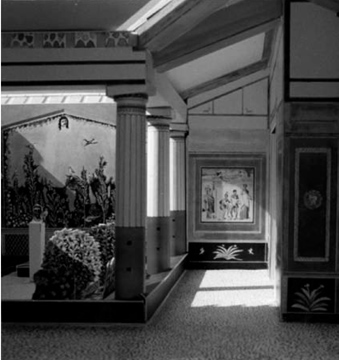
Plate 9. Model of the peristyle garden of the House of the Tragic Poet. The back wall is painted with a garden scene. Under the colonnade is the famous painting of the sacrifice of Iphigeneia (Ill. 55).

Plate 10. Painting from the wall of the large dining room in the Chaste Lovers bakery (p. 218). At first sight an elegant scene, with comfortable cushions and drapes, and glass vessels set out neatly on the table. But the woman behind is already so drunk she can hardly stand up and just visible between the two reclining couples a man has passed out.

Plate 11. Balancing act. A nineteenthcentury copy of a lost painting from the Bar on the Via di Mercurio. The tightropes are probably a figment of the modern artist’s imagination (pp. 231–2).
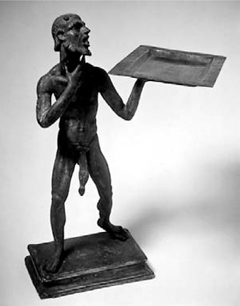
Plate 12. A typical Roman conceit. This gaunt elderly figure was designed to hold all kinds of titbits in his tray, for the benefit of wealthy diners (p.220).
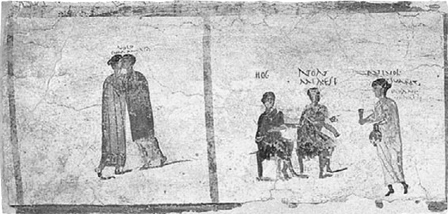
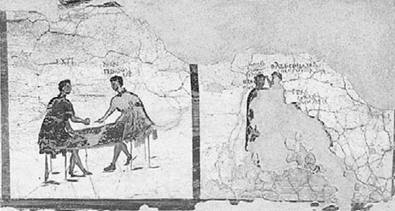
Plate 13. Almost a ‘comic strip’ series of paintings on the wall of the Inn of Salvius (p. 230). The couple in the first scene used to be taken for two men until cleaning revealed that the left hand figure was female. Although the final scene is damaged, it is clear enough that that landlord is laying down the law: ‘If you want to fight, go outside.’

Plate 14. Among the gathering of humans and gods that makes up the Villa of the Mysteries frieze (p. 132), a boy reads out from a scroll, watched over by a woman, perhaps his mother. Part of the visual ‘joke’ lies in that fact that we the viewers can neither see nor hear what he is reading out.
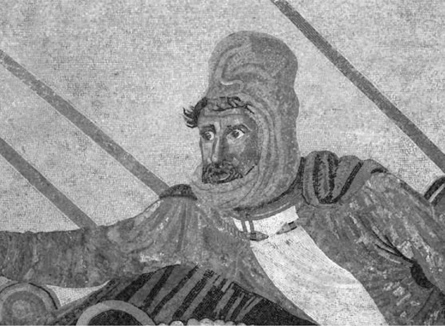
Plate 15. The face of the defeated king Darius from the ‘Alexander Mosaic’ in the House of the Faun (p. 28).

Plate 16. The baths offered a glimpse of luxury to the ordinary Pompeian bather. This nineteenth-century painting recreates the ambience of the Stabian Baths (p. 246).

Plate 17. In the centre (
tablinum
) of the House of the Tragic Poet (Fig 6), this mosaic depicted a group of actors preparing to go on stage. The performance is to be a satyr play, hence the thespians are squeezing into goat costumes (pp. 254–5).
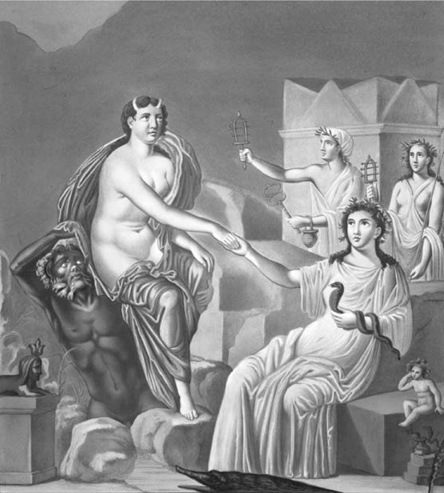
Plate 18. A painting from the sacred precinct of Isis in a nineteenth-century copy. The Greek priestess Io, one of Zeus’ lovers, is received in Egypt by the goddess Isis. According to the myth, Io had been hounded by the jealous Hera, Zeus’ wife – who at one stage had turned her into a heifer, hence the horns. She is supported by a river god (p. 306).

Other books
Fog Magic by Julia L. Sauer
Tempted Again by Cathie Linz
Moral Imperative by C. G. Cooper
The Moonlight by Nicholas Guild
A Lily on the Heath 4 by Colleen Gleason
The Secret Servant by Daniel Silva
Monument 14: Savage Drift (Monument 14 Series) by Emmy Laybourne
Liberation (I Am Margaret Book 3) by Corinna Turner
A Beautiful Dark by Jocelyn Davies
The Golden Flight by Michael Tod
